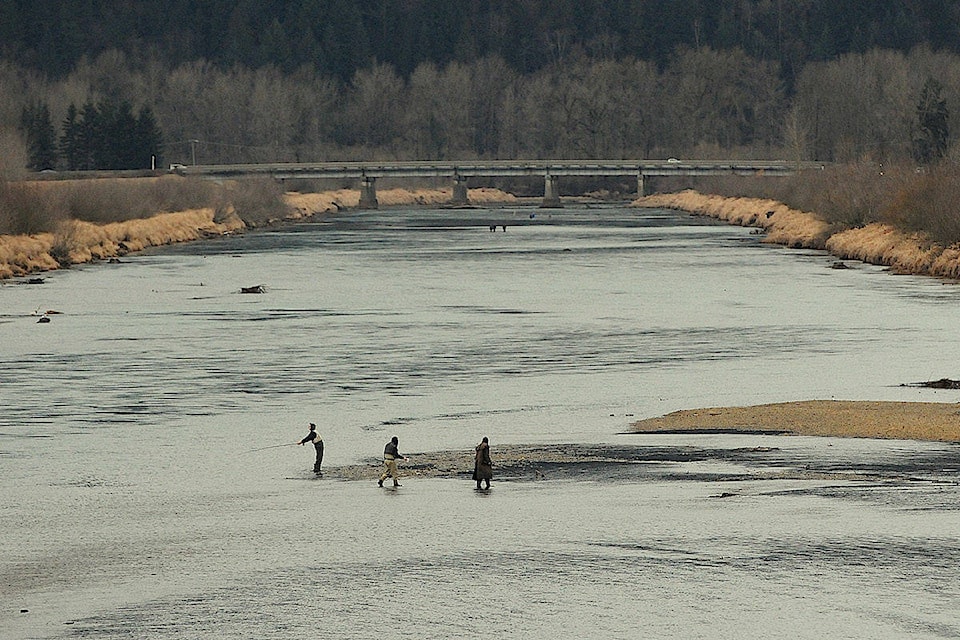Sportfishing groups are calling for “respect and consideration” on the Lower Fraser River as a pilot fishery by a local First Nation gets underway.
Semá:th (Sumas) First Nation has been authorized to conduct gill-net fisheries to catch chinook salmon for food, social and ceremonial (FSC) purposes.
Nets will be in the Vedder River from the confluence of the Sumas and Vedder rivers, to the Keith Wilson bridge from now until the end of August.
“We are hopeful that respect and consideration will be evident on the river for all fishers,” according to the news release July 15 from the Fraser River Sport Fish Advisory Committees, B.C. Federation of Drift Fishers, Fraser Valley Salmon Society, and Fraser River Sportfishing Alliance.
The fishers will use eight-inch gill-nets that will be highly visible and marked with buoys.
Anglers, boaters and other river users who spend time the Vedder canal are being asked to be aware of the fishery, and to give the fishing activity a wide berth.
“I think we are in sensitive times when it comes to fishing and fish management,” said Dean Werk, president of the Fraser Valley Salmon Society.
Plummeting numbers of returning Fraser Chinook is creating concerns, he said. At the same time there is a desire to see a harmonious atmosphere maintained on the river with respect shown for this attempt to renew a traditional fishery, he said.
“The future viability of these fish are at stake,” Werk said. “Providing information to the general public in this way we hope will go a long way toward ensuring safety on and off the river.”
The pilot fishery will be monitored and catch results will be provided to DFO and to the Semá:th for their own data-gathering and research.
Semá:th officials are also asking for the co-operation of other river users as they prepare for the fishery, according to a news release from leadership and members.
The pilot project is the chance for the community to renew a fishery in the historic waterway, which is a remnant of Sumas Lake drained in 1924 to create land for agriculture and settlement.
Dwindling salmon stocks, limited fishing openings, and the impacts of the Big Bar landslide all contribute to why this fishery is needed to feed the community and collect data on the resource, they said.
Fishers will use eight-inch gill nets to selectively target chinook to avoid netting any co-migrating salmon from stocks of concern like Cultus or Chilliwack Lake sockeye. Other selective gear such as tangle tooth nets and more might be tested as part of this pilot project.
READ MORE: Sumas First Nation pilots fishery to renew practice
Do you have something to add to this story, or something else we should report on? Email:
jfeinberg@theprogress.com
@CHWKjourno
Like us on Facebook and follow us on Twitter.
Want to support local journalism during the pandemic? Make a donation here.
